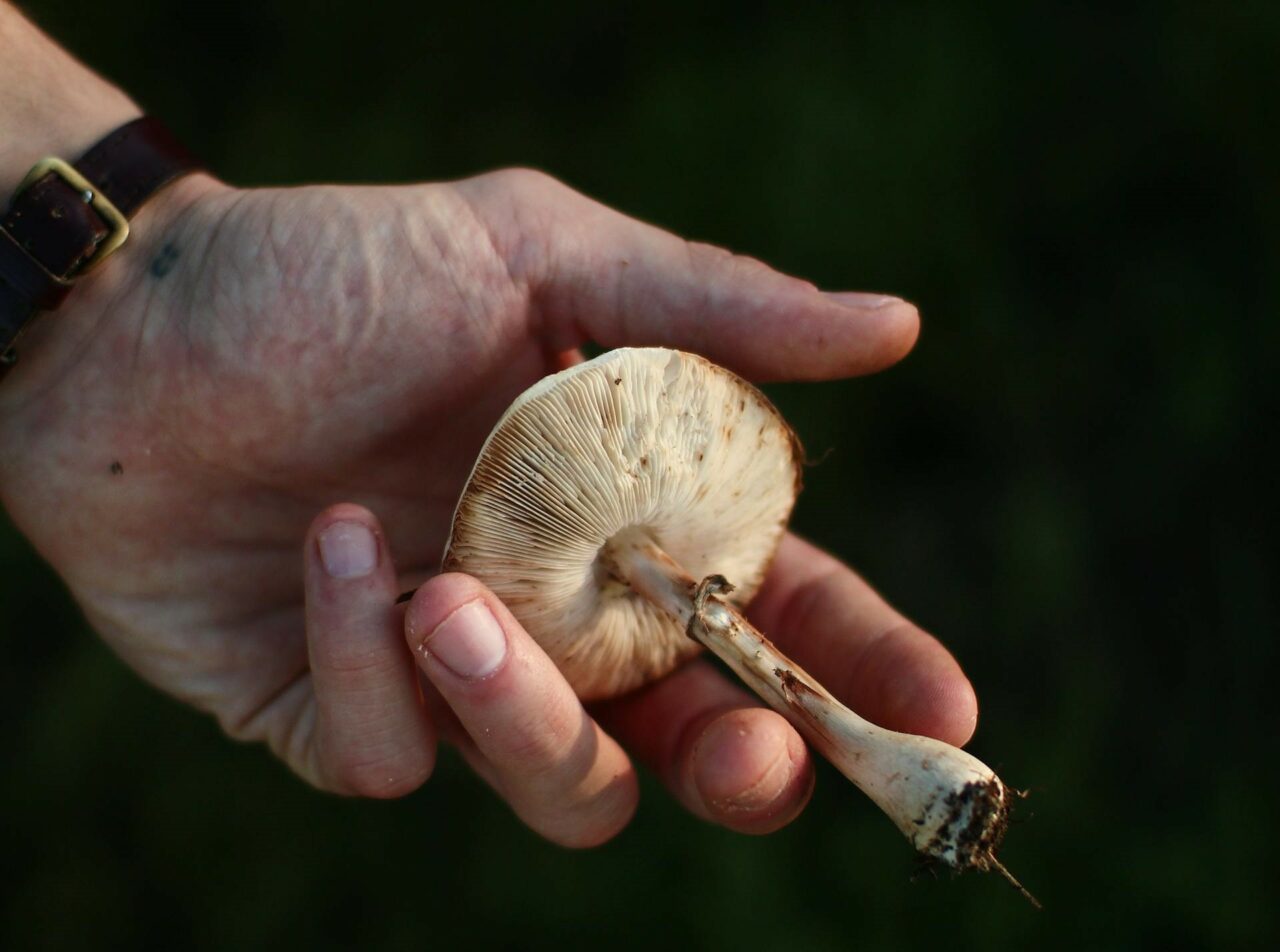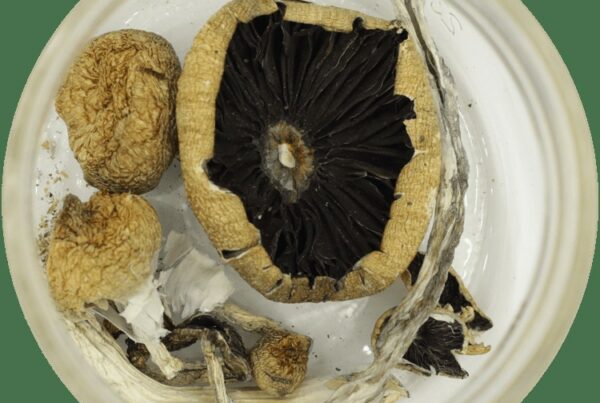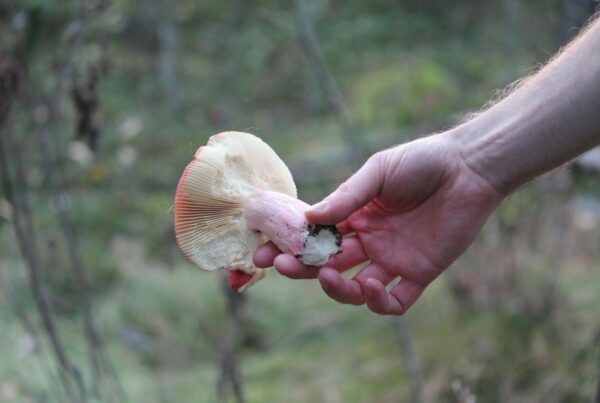Psilocybin mushrooms, akin to LSD in their role as a serotonin 5-HT2A receptor agonist, are a classic type of psychedelic. Current research is examining their potential in psilocybin-facilitated therapy for various mental health issues, including emotional distress linked with major depression, anxiety, cluster headaches, and migraines.
Understanding how shrooms can alleviate these conditions necessitates a deeper look into their metabolism within the body. This knowledge enables both researchers and users to understand how the active compound brings about its psychological and therapeutic effects. This article offers a basic overview of the pharmacology and pharmacokinetics of psilocybin.
[toc]
Key Takeaways:
- Half of the ingested psychedelic fungi is absorbed and dispersed throughout the body.
- The compound from the fungi undergoes dephosphorylation through the enzyme alkaline phosphatase, mainly in the liver.
- Around 3.4% of the compound is excreted unchanged within 24 hours, with the majority expelled as a stable metabolite.
What is Pharmacokinetics?
Pharmacokinetics (PK) studies how the body handles substances, like drugs, upon their entry into the system. It’s a distinct yet related field to pharmacodynamics, which focuses on how a substance interacts with the body. PK investigates four main areas: absorption, distribution, metabolism, and excretion (ADME).
This understanding helps healthcare professionals prescribe the most effective and least risky medications. It also allows them to customize treatments to fit each patient’s specific physiological and lifestyle needs.
How Does Pharmacokinetics Relate to Psilocybin?
Psilocybin and psilocin, the primary active components in some magic mushroom species, have garnered significant attention from researchers and users alike. Pharmacokinetics explores how the body deals with mushrooms containing psilocybin and aids in understanding their probable effects, be they medicinal or recreational.
These compounds are known by various names, such as “magic,” “psychedelic,” “medicinal,” or “sacred.” The fungi containing these compounds are consumed, with The The potency of magic mushrooms depends on a variety of factors, such as the specific mushroom species, where they originated, their size, how they were grown and dried, and their age. These factors can significantly alter their concentration levels.
These mushrooms naturally occur in the wild, but scientists have also developed ways to create them synthetically in a lab. Both the natural and lab-grown versions have low toxicity, but they may cause minor side effects like nausea or vomiting.
Despite these potential side effects, the compounds in these mushrooms have demonstrated potential therapeutic benefits due to their safe usage and non-addictive nature. This has led to ongoing research into their potential applications in psychotherapy, particularly for treating anxiety and depression.
Understanding the 4 Stages of Pharmacokinetics
Psilocybin, the compound present in these mushrooms, is not active in its natural state. It functions as a prodrug, converting into its active form, psilocin. Enzymes such as alkaline phosphatase aid this transformation, which then allows psilocin to be absorbed by the body and circulate to various tissues. However, after oral ingestion, psilocybin cannot be detected in the circulatory system, faeces, or urine.
Absorption
Absorption refers to the process by which the compound enters the bloodstream from the site where it was administered. This process significantly influences the speed and effectiveness of the compound reaching its target, such as the plasma. Oral consumption is the most common method of administration. Inhalation has been tested, but it is not as efficient as oral ingestion.
The absorption process also includes the release of the compound from the dosage form during oral ingestion. Factors like delays in the throat or esophagus can affect this, potentially slowing the effects or causing irritation. Once the compound reaches the stomach, the acidic environment could start to break it down before it enters the bloodstream.
Research on animals suggests that only around 50% of orally ingested psychedelics are absorbed and distributed throughout the body.
Factors That Influence the Absorption Process
Several factors can influence the absorption process, leading to variations in the onset, intensity, and duration of effects:
- Stomach Contents: Eating before ingestion can delay the process because a full stomach slows down the onset of effects. On the other hand, an empty stomach can speed up absorption.
- Body Fat: Substances can accumulate in fatty tissues, potentially prolonging their effects.
- Age: Body composition and metabolic rates can change with age.
- Zero-Order Kinetics: This is when a substance is expelled at a fixed rate, regardless of its concentration.
- First-Order Kinetics: In this method, the rate of elimination is directly related to the concentration of the drug in the body.
Various factors, such as the size, polarity, and protein-binding ability of psilocin, as well as personal physiological factors like hydration levels and body composition, have significant influence on this process.
The ultimate goal is to achieve an effective concentration at the intended target. To be effective, the psilocin must arrive at the designated location, as dictated by the volume of distribution, and remain unbound to proteins, which allows it to actively interact with its receptor.
What Factors Affect the Distribution Process?
Several factors can influence the distribution process:
Typically, the effects start to manifest between 20 to 40 minutes after consumption, peaking around 80 to 100 minutes. The effects of magic mushrooms generally last for 4 to 6 hours.
How Does Brain Distribution Happen?
An initial experimental study on two species found that its binding affinity follows the order: 5HT2A > 5HT1A > 5HT2B [23]. It also attaches to dopamine D1, 5HT1E, 5HT5A, 5HT7, 5HT6, D3, 5HT2C, and 5HT1B receptors.
It acts as a partial agonist at the 5HT2A receptor, with an efficacy of about 40%. The psychedelic effects can be traced back to its partial agonist activity at 5HT1A autoreceptors.
The mood-lifting and psychotomimetic experiences might be attributed to the observed association between increased dopamine levels and feelings of detachment and euphoria. Hallucinogens work by modifying neurochemistry and receptor activity. They enhance 5HT2A agonist activity by elevating BDNF synthesis in the hippocampus, which subsequently fosters neurogenesis and reduces conditioned fear-related behaviors.
Excretion
Excretion is the mechanism through which the The human body expels foreign substances in a number of ways. Primarily, these are removed through the kidneys, but the lungs, skin, and gastrointestinal tract also contribute to the elimination process. In terms of kidney function, substances like naturally occurring psychedelic drugs are either filtered out in the glomerulus or secreted in the tubules. The process is complicated somewhat by reabsorption.
The primary compound in question has a half-life of roughly 160 minutes, in comparison to psilocin, which has a half-life of about 50 minutes. Animal studies suggest that the majority of this substance is eliminated through urine, making up around 65% of the urine produced within 8 hours of consumption. The substance can also be found in smaller amounts in bile and feces even after this time period.
In the human body, about 3.4% of the original substance is excreted within a 24-hour period. However, most of it is expelled as psilocin-O-glucuronide, a more stable metabolite. This metabolite’s stability allows the substance to be traceable in urine samples over extended periods.
The body primarily employs two methods for substance elimination:
Most psychedelic drugs are eliminated following the first-order kinetics principle, reaching an equilibrium concentration after four to five half-lives. Complete elimination also typically occurs after four to five half-lives.
Discover Our Variety of Hallucinogenic Mushrooms
Metabolism varies among different species of fungi. By buying from reliable online sources like Buy Dmt Canada, you can avoid the risk of consuming poisonous mushrooms. Certain varieties, such as Agaric mushrooms, can have strong and undesirable effects. As a result, it’s vital to obtain magic mushrooms from reputable sources, rather than unsafe street vendors or picking them wild.
| Feature | Enigma | Full Moon Party | Gold Member | |
| Strain Type | Psilocybe Cubensis OMNI | Psilocybe cubensis (Thai Koh Samui) | Psilocybe cubensis | |
| Potency | Exceptionally high; 3.8% tryptamine content | Moderate to high potency | High potency | |
| Visual Characteristics | Resembles a blob or | Resembles a cauliflower or brain-like structure | Takes on a classic cubensis look; moderate in size | Characterized by thick white stems, golden caramel-colored caps, and evident blue bruising |
| Effects | Considered the most potent, resulting in intense effects | Yields a strong mental high; onset is delayed but accompanied by vivid visuals | Produces potent visuals and feelings of euphoria |
Online Guide to Psilocybin Mushroom Usage
For medical professionals, researchers, and users, grasping the pharmacokinetics of shrooms is crucial. This knowledge allows for informed decisions about dosage and timing, reducing potential risks.
Discover your perfect psychedelic experience at Buy Dmt Canada. Whether you desire a tranquil journey or deeper exploration, our diverse product portfolio is designed to cater to your specific needs. Enjoy top-tier, safe, and quality-controlled shrooms, eliminating worries about unverified sources or poisonous mushrooms.
Partake in the best magic mushrooms Canada has to offer, and elevate your psychedelic experience to unparalleled heights.
Frequently Asked Questions
Are interactions between shrooms and other medications known?
Our products may interact with certain medications, particularly those affecting serotonin levels, like SSRIs (Selective Serotonin Reuptake Inhibitors). SSRIs and SNRIs (Serotonin and Norepinephrine Reuptake Inhibitors) typically lessen the effects, unlike non-serotonergic antidepressants. This reduced effect can last up to three months after discontinuing antidepressant use.
Do all psychedelics use the same pathway as psilocybin?
No, each psychedelic substance has a unique structure that requires different metabolic processes to become active, and they bind to various receptors in the body. The mode of administration also impacts each psychedelic’s absorption. While the basic principles of absorption, metabolism, and distribution remain the same, the specific pathways and effects vary for each substance.
Does the form of the shroom affect its pharmacokinetics?
Yes, the form (be it fresh, powdered, or dried mushrooms) can influence the absorption rate. For example, powdered forms may be absorbed faster than whole dried ones due to quicker dissolution.
Suggested Reads:





